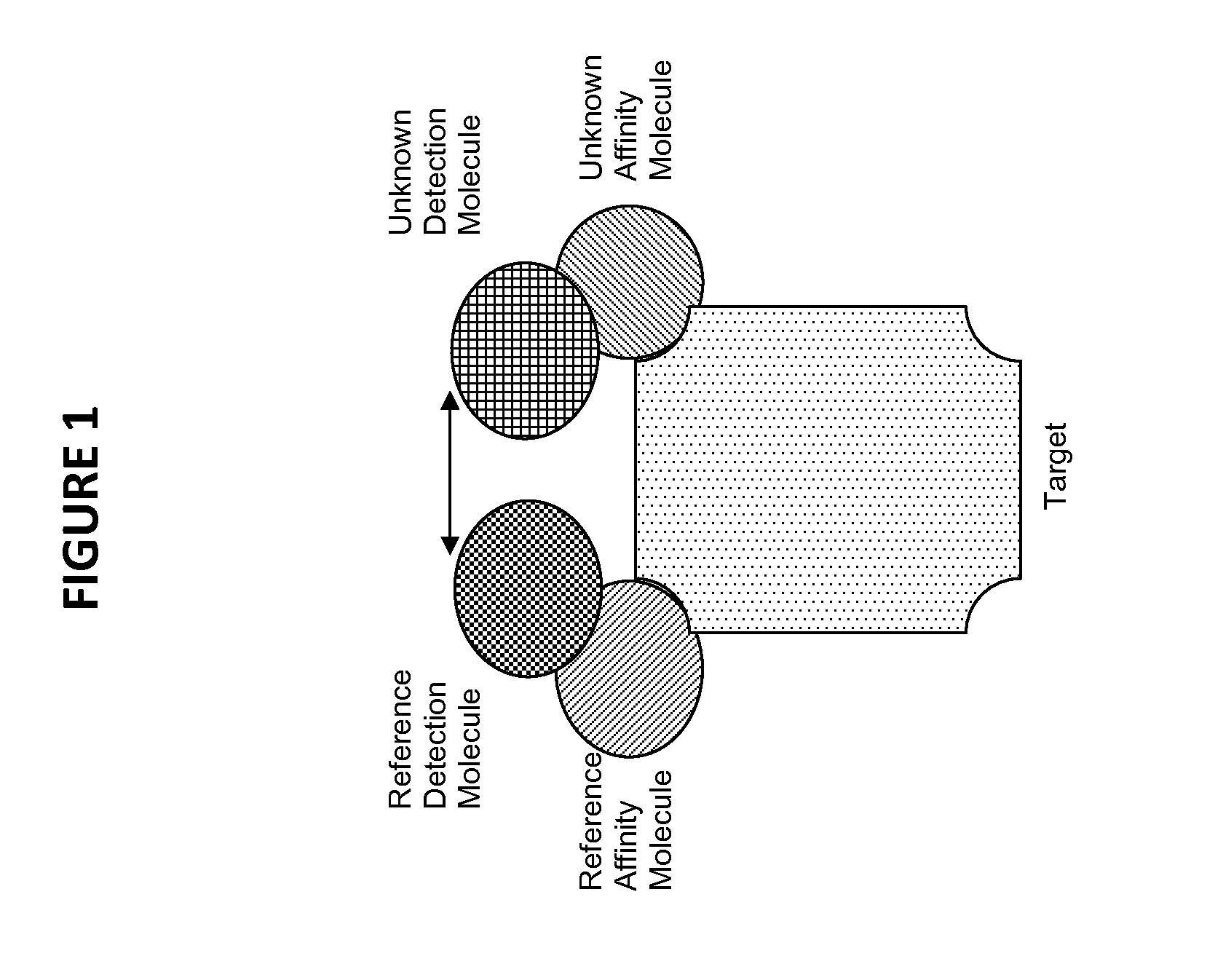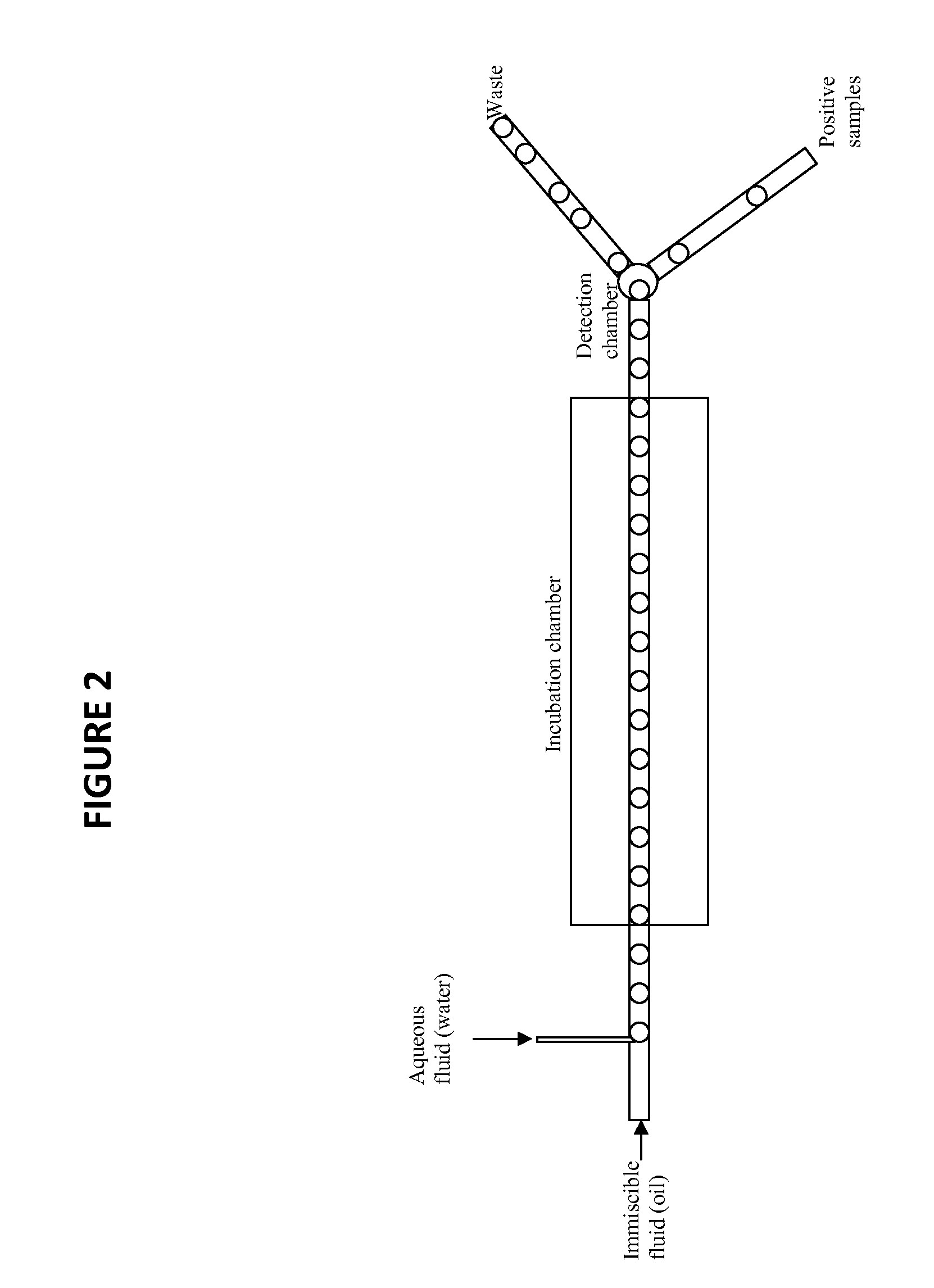Novel method for the selection of specific affinity binders by homogeneous noncompetitive assay
a selective assay and affinity molecule technology, applied in the field of immunochemistry, can solve the problems of discovery and characterization of affinity reagents for these applications
- Summary
- Abstract
- Description
- Claims
- Application Information
AI Technical Summary
Benefits of technology
Problems solved by technology
Method used
Image
Examples
example 1
Exemplary Use
[0072]The first example demonstrates homogeneous FRET analysis and its implementation in a microfluidic device. A small His tag labeled protein target is mixed with HiLyte Fluor™ 488 conjugated mouse anti-His tag monoclonal antibody and a known anti-target antibody (IgG) labeled with HiLyte Fluor™ 555 in a cuvette tube and the fluorescence at ˜600 nm determined when exciting the solution at ˜500 nm (FRET). The same binding reaction is loaded into a microfluidic device set up to measure FRET fluorescence in the same way. Next, each component is loaded into individual compartments of the microfluidic device, droplets created, merged, and mixed in line, and the FRET fluorescence determined.
example 2
Exemplary Use of Protein Fragment Complementation
[0073]The second example demonstrates utility of complementary renilla protein fragments fused to monobody affinity molecules via a peptide linker. A protein target is chosen for which the protein is available and the monobodies exist. The coding sequence for at least 2 monobodies is cloned into a cassette containing either the N-terminal renilla peptide or the C-terminal peptide, both using a ser / gly linker. The target protein, N-terminal renilla monobody, and C-terminal renilla monobody is mixed, added to renilla Luciferase Assay Reagent (Promega), and the bioluminescence measured using a luminometer. The same binding reaction is loaded into a microfluidic device set up to measure bioluminescence in the same way. Next, each component is loaded into individual compartments of the microfluidic device, droplets created, merged, and mixed in line, and the bioluminescence determined. Finally, a gene library of C-terminal (or N-terminal) ...
example 3
Exemplary Use of BRET
[0074]The third example demonstrates utility of a BRET system for screening affinity molecules. A protein target is chosen for which the protein is available and the monobodies exist. The coding sequence for one of the monobodies is cloned into a cassette containing a renilla luciferase sequence and the coding sequence for the other monobody is coned into a cassette containing a red fluorescent protein (RFP). The target protein, renilla monobody, and RFP monobody is mixed, added to renilla Luciferase Assay Reagent (Promega), and the fluorescence of the RFP measured using a near infrared light detector. The same binding reaction is loaded into a microfluidic device set up to measure bioluminescence in the same way. Next, each component is loaded into individual compartments of the microfluidic device, droplets created, merged, and mixed in line, and the bioluminescence determined. Finally, a gene library of C-terminal (or N-terminal) renilla monobodies coding for...
PUM
| Property | Measurement | Unit |
|---|---|---|
| molecular weight | aaaaa | aaaaa |
| time- | aaaaa | aaaaa |
| affinity | aaaaa | aaaaa |
Abstract
Description
Claims
Application Information
 Login to View More
Login to View More - R&D
- Intellectual Property
- Life Sciences
- Materials
- Tech Scout
- Unparalleled Data Quality
- Higher Quality Content
- 60% Fewer Hallucinations
Browse by: Latest US Patents, China's latest patents, Technical Efficacy Thesaurus, Application Domain, Technology Topic, Popular Technical Reports.
© 2025 PatSnap. All rights reserved.Legal|Privacy policy|Modern Slavery Act Transparency Statement|Sitemap|About US| Contact US: help@patsnap.com


